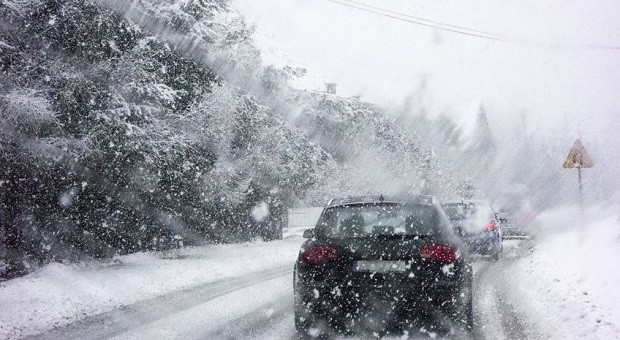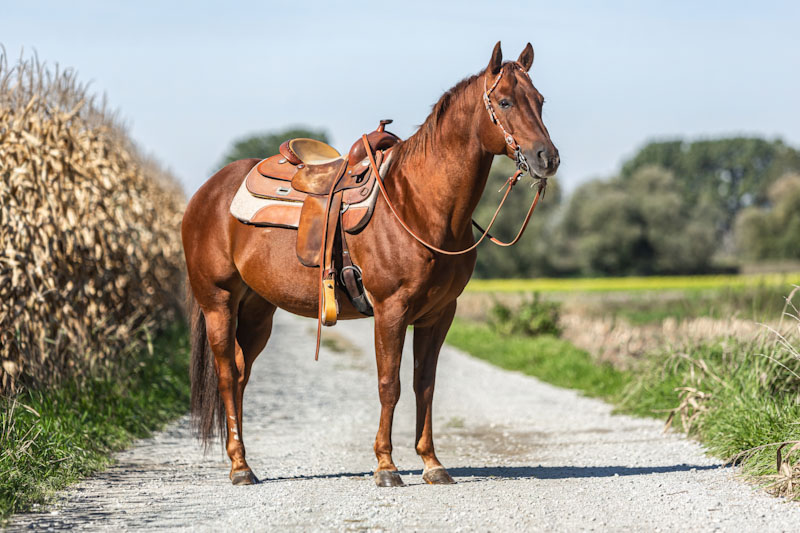As the eastern seaboard remains in an unbelievable state of chaos due to Winter Storm Jonas, I cannot help but think back to times and places where we didn’t bother to name “winter storms”. We dealt with temperatures in the double digits below freezing along with 8+ feet of snow and didn’t descend into mindless panic that prompts politicians to call for driving curfews and such.
Here are some tips based on my experiences over decades of driving on snowy/icy mountain, town, city, highway, and thruway roads. Regardless of day or night, heavy traffic or none, whiteouts or sleet – I have never needed a 4 x 4, (most of those years I drove a manual with front wheel drive), fancy computers, or halogen headlights, let alone a tow truck.
Make Sure You Are Ready for the Journey
The first thing you must do is be prepared at all levels to drive in the snow. This means mentally you must be focused and determined to make it home safe and sound. If you are tired or hungry, take a nap and get something to eat first, even if it is in the back seat of your vehicle (don’t idle the vehicle, but do use blankets and hand warmers).
Remember, the storm isn’t going anywhere, and you aren’t going to be able to outrun it. Even a 15 – 20 minute power nap can mean an enormous difference in your ability to manage snow glare and other problems that will cause more fatigue than expected. The rest time also gives you a chance to refocus away from what you were doing before driving home so that you can more effectively shift gears to focus only on your driving.
Some foods are better than others when it comes to a position where you might be on the road for several hours. Much of this time will actually be very tedious, slow work, so you are best served by choosing foods and beverages that will keep you alert without giving you a buzz.
Since each person is different, I can only say that some people can do well enough with a cup of coffee and some fruit. I personally recommend decaf coffee/tea or fruit juice. Most people will actually be too buzzed by power drinks and not realize that the “energized” feeling is actually a stress response that will slow down your reflexes and make it harder to concentrate on monotonous but critical details.
Your next task will be to put all thoughts of time aside. Call family, friends, co-workers, or anyone else that is expecting you to arrive at your destination. Let them know an approximate time, but explain that it could take 2 – 3x or more time before you arrive. It is better to be late than never get there at all or wind up injured. At least when others know you are on the way and may be late, it will take off some of the external pressure that might cause you to move faster than is safe for the weather conditions.
Next, shut off the cell phone. The last thing you will need is the phone to ring or a text to come in. If you get stuck or see an accident that needs to be reported, make sure you are fully stopped and then turn on the phone to make your call. As with any other kind of driving, there is never anything coming in via your phone that is important enough to warrant having it on, let alone using it while you are in the driver’s seat.
Once you are ready to get started, take a moment to center yourself mentally, emotionally and yes… spiritually. Start off with a prayer before you start the engine or do whatever it is you need to do in order to feel safe and confident that you are going to make it to your destination without mishap.
This won’t make you invincible, but it will give you a point of reference and help you stay calm when you visually lose the road, you have to make it down a steep decline, or you suddenly go into a skid. That point of calm is absolutely essential, because without it – all you have left is panic- and when you panic – the snow wins and you get hurt or die.
Make Sure Your Car Is Ready for the Journey
Perhaps in some ways, preparing your vehicle for driving in the snow is easier than preparing yourself. Here are the basics:
- Check all oils and fluids to make sure they are at appropriate levels. This includes making sure that you have windshield fluid that will not cloud up or freeze up in colder temperatures.
- Keep spare blankets, flares, ropes, kitty litter (in case you get stuck and need traction under the driving wheels), flashlights, food, water, hot packs, a snow shovel that can cut through ice, an ice scraper, extra heavy gloves, and driving chains in the vehicle.
- Make sure that your tires are not overly worn and that they are suitable for the conditions you will be driving in. For most cases these days, all weather tires will work well enough. If you are going on mountain roads or other complex terrain, use snow tires. Together with that, always check the air pressure in the tires before starting off.
- Always keep your windshield wipers in good shape. An annoying line in the windshield when it rains can be catastrophic in the snow or a whiteout.
- Choose a radio station that will deliver traffic alerts and also relaxing music. Choose music that will keep you awake and alert without adding to your stress levels or music that encourages you to move faster.
What Your Vehicle Can and Can’t Do For You
In these days, many people buy 4×4 vehicles or ones with all kinds of fancy computer navigation systems that are supposed to prevent accidents in the snow or on the ice. Sadly, these same people forget that it is their foot on the gas or brake, and their hands on the steering wheel. The computer can only compensate so much, but in the end, nothing can violate the laws of nature and motion.
There are few things people don’t know about what their vehicle can and cannot do in the snow. Even if you know this, remember, other drivers may not, and they can endanger your life with their excess speed or insistence on driving distracted:
- Anti-lock brakes will not prevent a skid. In fact, anti-lock brakes only kick in when your vehicle begins to skid. This system can get the wheels turning, which in turn builds traction. Depending on the speed you are going, this may or may not reduce the skid length enough to prevent you from hitting something or going into a ditch.
- There is no guarantee that you will skid only in one direction. Even though modern steering systems are designed to favor a pull to the right and roads are sloped so that you will angle to the right, that does not mean your vehicle will go that way in a skid. Your direction of travel depends on the direction the driving wheels were pointing when they locked up and the speed you were traveling.
- The traction off light is not a reliable warning that a skid is about to happen. In fact, the traction off light may only go on when your vehicle is already in a skid and there is no way to prevent it from happening.
- Computer systems can’t predict the location of black ice or any other slippery condition any better than you can. They cannot slow the car down for you, nor can they take over and steer out of it on your behalf.
- Even though some vehicles can shift drive power to different wheels, that does not mean the new driving wheel will have any better traction than the others. In addition, by the time the switch over happens, you will have already lost valuable time that could have been spent working out of the skid.
- There is no such thing as a computer, drive system, or other feature that can compensate for a loss of traction let alone the consequences. This includes the kind of minor slippage that people don’t pay attention to and tend to believe means they can just use longer distances when stopping. The fact of the matter is if your vehicle does not have the best possible traction, you are going too fast and you are also far more likely to skid. The extra 5 – 10 miles of our faster travel can cost your life or the lives of others.
- There is no substitute for slowing down and taking your time. Even if you have to crawl along at 3 – 5 miles an hour or just barely keep your wheels moving, you will get where you need to go.
12 Basic Driving Tips
Here are some basic things you should always know how to do when driving in the snow and ice:
- To preserve night vision, put your sun visor down. If the clouds are very heavy at night, you will get a pink sky that is more than bright enough to see by. It can also rob you of vital night vision because of still high contrast between the snow and other land features.
- When driving in day hours, use UV protect sunglasses. This will cut down on the glare and also eye fatigue. If you wear prescription glasses, consider getting ones with a good quality anti-glare coat. These glasses are also indispensable for night driving in the snow.
- If you are driving in areas with oncoming traffic, turn your eyes so that you are looking more to the lower right instead of at their headlights. You should still be able to see the road and the other vehicle in your peripheral vision.
- Do not stare at the light path created by your lights, and try to avoid high beams.
- If the lines on the road are invisible, look to the sides for the location of guardrails or signs that will act as markers. As long as you keep within those points, you will be either on the road itself or close to the shoulder. If another vehicle comes along, ease over gradually and gently to let them pass if they wish. Do not speed up or move suddenly, or it can put you into a skid.
- Wind and increased snowfall can cause sudden whiteouts. The best thing you can do in this situation is slow down to a crawl and put your hazards on. Keep your foot on the brake just enough to engage the brake lights. Most whiteouts will only last for a few minutes, however they spell disaster for many drivers that try to drive at normal speed or forget to make their vehicle as visible as possible. Sadly, pulling off to the side of the road is not the best answer, unless you can get into a driveway, turnaround area, or a parking lot where vehicles coming up from behind aren’t likely to slam into you.
- Even though you may have a full whiteout in front of you, you should still be able to see some road markers to the right side, so use those to stay as much on the road as possible. If you get onto the shoulder, you will feel that in the wheels. It should also be noted that some mountain roads have lines cut into the pavement on the shoulder that will make a distinct sound as you go over it. This can help you navigate turns even when you can’t see anything at all. Unfortunately, roads with this feature are few and far between, however if you are on them, use them to your advantage.
- If you have a line of cars behind you, ease over, stop, and let them pass. You will always get a few nuts in the bunch that are talking on the cell phone, in a hurry, have no respect for the laws of nature, or are so panicked they are trying to outrun the storm. Let them pass along with the rest of the crowd so that they don’t involve you in an accident.
- In most areas, snow plows will clear one lane more than the other. Use that lane and then use the uneven area as your driving landmark.
- Do everything you can to avoid making a full stop, unless you are at an actual stop sign. Drop down to a crawl so that you can wait for lights to turn green, and do what you can to let the weight of the engine allow you to come to a natural stop if needed. Nothing creates skids faster than braking. Even if you can keep your wheels just turning, you will have better traction and better control.
- If you must make a full stop before making a turn, do not simply start turning the steering wheel because you will go into a skid. Let your vehicle’s tires make at least one full rotation before turning the wheel. Turn gradually and make sure that you always feel tire traction. If traction becomes lighter, ease gently off the gas and stop turning the wheel. When you regain better traction, you can turn the wheel some more and gently accelerate.
- Use the weight of the vehicles engine to increase traction. If you are fortunate enough to be driving a vehicle with a manual transmission, just drop one gear down. For example, if your gear shift has 5th as your overdrive or highway gear, drop down to 4 or even 3 if you are going that slowly. Some automatic transmissions can also be geared down, however it will put more wear on the transmission. Remember that if you do use the engine’s weight to avoid a skid, you will also have more weight added to your forward momentum if you do actually skid. This means your car will move forward further and faster. In short, before you assume that you know how to gear down and manage a skid, be sure to practice so that you know what to expect. There are going to be times when you will, in fact, have to gear down, however you must also know how to use that tool.
Surviving a Skid
No matter how hard you try, there are going to be times when your vehicle skids. When this happens, you must know how to get out of the skid and what to expect, and instructions for getting out of a rear wheel drive skid are different than for front and 4×4. In my experience with front wheel drives, do the following:
- First, do not panic and do not hit the brakes. Your wheels are already locked up, applying the brakes will only make the situation worse. Do not pull the parking brake either, as this will lock up your back wheels too. Always remember that hitting the brakes in response to the first stage of a skid will cause your car to spin around instead of go straight.
- Do not disengage the transmission or try to put the vehicle in neutral hoping that it will slow the vehicle down. All this will accomplish is to disengage the engine and cause the weight to shift, which makes yet another variable to try and compensate for. In a skid, it is important to make things as simple as possible so that you can use whatever traction you regain to the best advantage.
- Very gradually ease off the gas until you are off completely. Do not do so suddenly because you will disrupt the engine weight too suddenly, and this will make it harder for the tires to regain traction.
- Do not turn the wheel in the opposite direction of the skid. Instead, steer ever so slightly into the same direction. This will put more the car into better alignment which will help all 4 wheels regain traction. If your wheels and vehicle are straight in alignment with the direction of the skid, give the wheel a slow, slight tug in either direction to see if you can gain some traction. Unfortunately, there is no way to tell where the ice begins or ends that caused the skid. It is truly a matter of luck to find a place where your tires will grip before you hit something or the vehicle stops under its own weight. Always remember that, for a front wheel drive, trying to steer in the opposite direction of the skid is the second part of what will cause your car to spin around in circles or spiral completely out of control.
- Once you feel traction, use steady, gradual motion to turn the wheel the direction you want to go. Do not turn too fast or the overcompensation will cause the vehicle to fishtail. Once you feel the wheels turn and grip in the desired direction, you can gradually begin to apply the brakes.
- You can expect at least some fishtailing. Work through it with gradual motions just as you did the skid.
Oddly enough, the best way to survive a skid is to get plenty of practice with navigating them. This includes making sure that you know what your vehicle’s full traction feels like. You can learn a lot about this when driving in the rain. If you are out in the beginning of a rainstorm, oil from the road will make it more slick. Pay attention so that you can pick up on the subtle change in your vehicle’s traction. This change will feel more pronounced on snow and ice.
You can and should ask about local areas where you can practice going into skids and getting out of them. Driving schools may have obstacle courses that you can practice on as well as trainers that will give you the right information for your specific vehicle. Even if you already have your driver’s license, or have been driving for many years, you can always go for a limited number of lessons and learn how to get out of skids.
As with many dangerous driving conditions, you are best served by staying where you are instead of trying to travel. On the other hand, there are also going to be times when you will, in fact, have to drive in blizzard or icy conditions. You can do this safely, just as people in mountain areas have done for decades.
If you follow a few simple rules, you can drive just about any road in any condition, and may even come to a point where it becomes a winter sport that you do not welcome, but you do not fear it either.
This article has been written by Carmela Tyrell for Survivopedia.










Pingback:Best Tips for Driving in the Snow | Freedom Newz | January 29, 2016
|
Pingback:Best Tips for Driving in the Snow | Prepper's Survival Homestead | January 29, 2016
|
davida | January 29, 2016
|
if its ice and sleet on roads and you do not have chains on all 4 wheels YOU ARE NOT PREPAIRED . STAY HOME . DO NOT DRIVE OR WALK
IF YOU MEET THE ABOVE READYNESS ;
DO NOT EXCEED 15 OR 20 MPH SPEED !!!!
davida | January 29, 2016
|
AND ACT LIKE THE VECHICAL HAS NO BREAKS AT ALL CUZ IT DOESEN’T
William Harrington | January 29, 2016
|
There are several things that could be added. There are still a number of vehicles with rear wheel drive that deserve mention along with using manual transmissions. I have been driving for 60 years as have many others and the driving tactics for what I have mentioned are very different.
carmela tyrrell | January 30, 2016
|
William,
You are absolutely correct about the differences between rear wheel and automatic tranny snow driving. I deferred (and noted such), in this case, to vehicles that I have driven enough to give the best of my experience as opposed to putting things that I read elsewhere combined with the rudiments that I have used here and there. This is a topic very near and dear to me as I have seen some really ignorant drivers and several nasty pileups they caused over the years and do not wish to propagate something I haven’t tested.
Others who have driven these vehicles in snow/ice are more than welcome to offer their advice and tips based on experience in the comments.
William Harringtn | January 30, 2016
|
With a manual transmission NEVER start off on ice or snow in first gear, use 2nd or possibly 3rd gear and ride the clutch. This is not the best for the clutch if used anywhere but on a slick surface. but 1st gear produces too much torque and is more likely to spin the wheels.
Pingback:Best Tips for Driving in the Snow | NewZSentinel | January 29, 2016
|
gene olson | January 29, 2016
|
I learned to drive in central Nebraska in the late 1940’s and early 1950’s. Two wheel, rear wheel drive,and all. This is the best, most thoughtful piece I have ever read. The only thing I could add, is the overall admonition, that a tire only has traction when it is not skidding or SPINNING. Never give so much gas to make the drive wheels, front or rear, lose traction by spinning. Never turn the steering wheel so fast that the front wheels skid..
Larry Mather | January 29, 2016
|
Item #6 in Driving tips states “The best thing you can do in this situation is slow down to a crawl and put your hazards on. Keep your foot on the brake just enough to engage the brake lights. ” In most vehicles the hazard lights, and brake lights are the same bulb. The hazard lights will stop working when the brake lights are used.
Andi | January 29, 2016
|
Sounds like good advice, especially the part about get training and experience in a safe environment to do so. I was confused several times by the use of the expression “use the weight of the engine”. In one place, I got from context this meant using engine compression to gradually slow down. In another it seemed to imply momentum. It might payoff to go back and edit these parts for clarity.
Pingback:Best Tips for Driving in the Snow | Bsn Global News | January 29, 2016
|
Bill in idaho | January 30, 2016
|
To Carmela Tyrrell – You provided a sound, thoughtful, level-headed article. God Bless You for your efforts. You just saved a Lot of People – Vehicle Damage, Exposure, Injury, or even Their Lives ! Good Work !!
To Friend Gene Olson, I’d say You are Right on the Money, Brother. Sounds like you started driving about when I did – around 60 plus years ago.
I will add a few “Tidbits” to Add to Gene’s. My snow driving encompases 45 years in Montana, Idaho, Wyoming, N. Dakota, and E. Washington State – plus B.C. and Alberta. Some Things to remember: > 1. A parked, idling vehicle can Kill You; > 2. If you do not have the Very Best Agr. Studded Snow Tires you can buy, Stay Home!; > 3. Deflate your tires to about 65% for more traction – Lots More! > 4. 4WD Vehicles Provide only One Advantage – getting Unstuck; 4WD Vehicles handle worse, stop poorly, skid longer, and get you in More Trouble than 2WD’s do; > 5. I drove a 2WD ’71 Ford F350 and a 2WD ’83 GMC K2500 Suburban on snow and “Black Ice” for 15 years plus, each; I could go (and stop) when the 4WDs could not; and Finally, > 5. If you use chains going up one side of the pass, keep them on going down. Best of Luck to you All, and Be Careful!
Ol’ Bill in Idaho
wAYNE | January 30, 2016
|
Something I did when I was 18 might be helpful to know.
I was going to go over White Pass in Washingtion. I was snowing very lightly, but I could see the pavement under the snow. So, I decided to go ahead. When I was halfway up it started snowing. It was dark, I had my lights on, but, I could not see the road.
So, I turned the steering wheel gently to the right. When I heard the tires crunching the snow, I gently turned back until I heard no crunching. Then turned back to the crunching. This would take only 2-3 seconds between each move. It was nerve wracking for on hour or so, but it worked. I made it.
I hope this is useful, but, I hope you never have to use it.
This is one of those examples where stupid met good luck.
P.S This was a great article.
Pingback:Best Tips for Driving in the Snow | TheSurvivalPlaceBlog | February 1, 2016
|
n/a | February 1, 2016
|
4×4 doesn’t help you stop faster, but it does give you more traction in turns and from a dead start in ice. It may not be necessary but it sure beats digging out your front tires and putting something under them for traction a few times a year.
MARCUS WILLIAMS | February 2, 2016
|
Back where I’m from the weather was so hot that the thought of snow was far-fetched, but after moving up North, I’ve been having a hard time coping up with the weather. Thanks for all your tips on the subject. Any particular tire brands you recommend that’s best for traction on the slippery ground?
Bill in idaho | February 3, 2016
|
Hey, Marcus. You ask an Excellent question – a question that more people need to ask. I buy ONLY Cooper’s Very Best Lines (Depends on the specific tire size) and I get them at “Big O Tires” here in Idaho. Cooper is the Last tire company to be Both American Owned AND American Manufactured. They are Not Cheap – but you get what you pay for – especially in tires. Welcome to the “North Country” – God’s country. Take care. Bill in Idaho.
Pingback:Survival Lessons From The Pioneers: The Donner Party | | disasterdefense.us | May 6, 2016
|